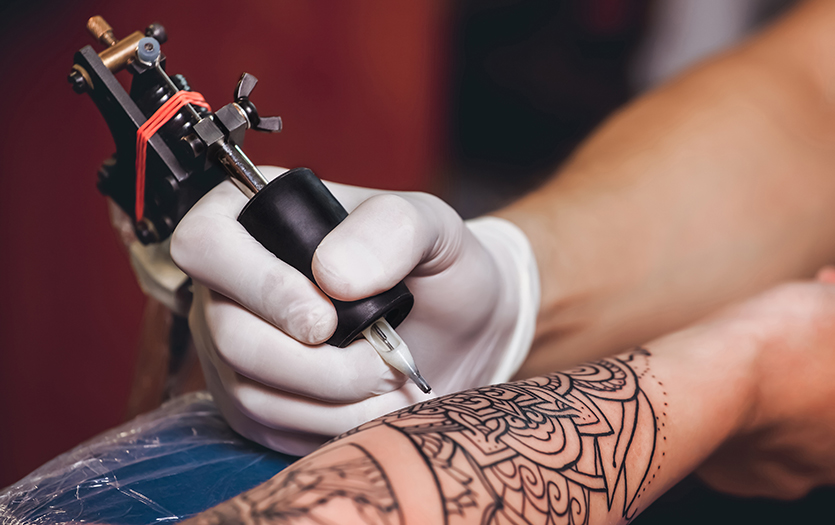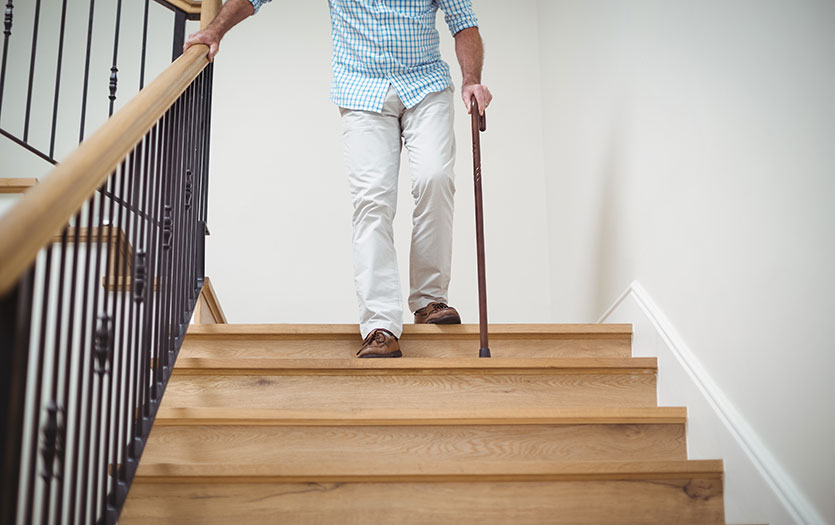
Tattoos are often synonymous with self-expression. Those willing to sit still long enough can have whatever words or images they want placed in the spot of their choosing. This body art doesn’t seem to be slowing down, either, with individuals of all ages proudly displaying designs on their bodies. While the finished product can be meaningful or beautiful, playful or profound, there are some serious risks you should keep in mind if you’re thinking about getting some ink.
Tattoo complications
Tattoos are a series of puncture wounds that carry ink into different levels of the skin, making permanent changes to the body. Because the skin is being wounded and injected with a foreign substance, issues can arise, including:
- Infection at the tattoo site, which can be a serious condition that requires medical attention.
- Minor skin reactions (contact dermatitis) or serious allergic reactions to the tattooing method or ink.
- Scarring, which can include raised scar tissue (keloids).
- The spread of infectious disease if a dirty method or equipment is used. Diseases include hepatitis B, hepatitis C and tetanus.
Tattoo infections
An infected tattoo can be serious. With an infection, the area around your tattoo may be painful, swollen, red and hot. You may see red streaks or pus at the tattoo site and/or have a fever. Or you may notice swollen or tender lymph nodes.
If you think you have an infection, call your doctor right away. Early treatment may prevent health problems or damage to your tattoo. Here’s some steps you should follow when treating your infection:
- If your doctor prescribed antibiotics or an antibiotic ointment, take or apply them as directed.
- If your doctor told you how to care for your infected tattoo, follow your doctor's instructions. If you did not get instructions, follow this general advice:
- Wash the tattoo with mild soap and water two times a day. Don't use hydrogen peroxide or alcohol, which can slow healing.
- Gently pat the tattoo dry after you wash it.
- Cover the tattoo with a thin layer of an unscented, water-based cream or lotion and a nonstick bandage.
- Replace the bandage as needed.
- Ask your doctor if you can take an over-the-counter pain medicine, such as acetaminophen (Tylenol®), ibuprofen (Advil®, Motrin®) or naproxen (Aleve®). Be safe with medications by reading and following all instructions on the label.
Allergic reaction to tattoo ink
Some people have an allergic reaction to the ink used for their tattoo, with reactions ranging from mild and annoying to sudden and life-threatening. An allergic reaction can be local and produce swelling, itching or hives in the area of contact with the allergen. Local reactions can usually be handled at home and are not life-threatening.
However, sometimes a local allergic reaction can be the start of a more serious whole-body reaction to the allergen. More serious reactions can include swelling of the throat, nausea or vomiting, wheezing or problems breathing (anaphylaxis). This is a medical emergency. Emergency care is always needed for an anaphylactic reaction.
Allergic reactions do not always occur the first time you are exposed to the tattoo ink. For example, if you have had three or four tattoos without any problems, you could have an allergic reaction to the ink the next time you get one. Each time you get a tattoo, you must watch for signs of an allergy and get help based on the severity of your reaction.
How to care for your tattoo
Most minor swelling and redness (inflammation) from a tattoo can be treated at home. If your tattoo artist gave you instructions, follow them carefully. If you didn't get instructions for skin care of the tattoo site, try using these:
- Stop any bleeding. Minimal bleeding can be stopped by applying direct pressure to the wound. It's normal for the tattoo site to ooze small amounts of blood for up to 24 hours and to ooze clear, yellow or blood-tinged fluid for several days.
- Apply a cold pack. This can help reduce swelling, bruising or itching. Never apply ice directly to the skin as it can cause tissue damage. Instead, put a layer of fabric between the cold pack and the skin.
- Take an antihistamine to treat hives and relieve itching. Be sure to follow all instructions on the label. Don't use strong soaps, detergents and other chemicals, which can make itching worse.
- Protect your tattoo with a bandage — especially if you think your tattoo might become dirty or irritated. Simply apply a thin layer of a water-based cream or lotion to a nonstick bandage and place the bandage on the tattoo site. This will prevent the irritated skin from sticking to the bandage. Just be sure to leave the bandage off with the skin open to air when you can.
How do you know if a tattoo studio is safe?
If you are thinking about getting a tattoo, go to a reputable studio. Look for or ask about the following:
- Is it clean? The entire studio, including the bathroom, should be clean.
- Do the tattoo artists follow these steps to prevent infection:
- Wash their hands before putting on new, disposable gloves?
- Clean the client's skin properly with iodine or alcohol before the procedure?
- Use sterile equipment, new needles and disposable single-use ink cups for each tattoo?
- Use sterile water to dilute ink or rinse needles during tattooing?
- What type of training does the person doing the tattoo artist have?
Where can you report problems with tattoos?
The U.S. Food and Drug Administration (FDA) encourages everyone to report adverse reactions to permanent and temporary tattoos and permanent makeup to the FDA's MedWatch. This agency monitors problems caused by cosmetic products and ingredients, including color additives. To report a problem, contact MedWatch online or at 5600 Fishers Lane, Rockville, MD 20852-9787
Take the decision to get a tattoo seriously. Not only could it cause health issues, but it’s also a permanent addition to your body, as tattoo removal is difficult, may cause scarring and may not be completely successful. That’s why it’s critical to think about all aspects of the procedure, including the risks and complications you may face.
Copyrighted material adapted with permission from Healthwise, Incorporated. This information does not replace the advice of a doctor.



